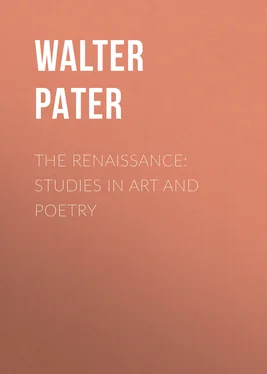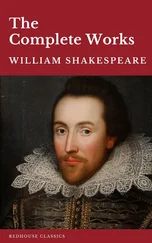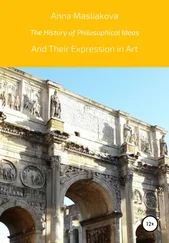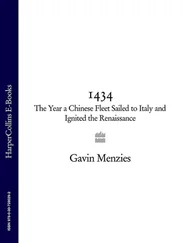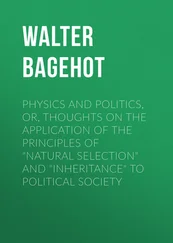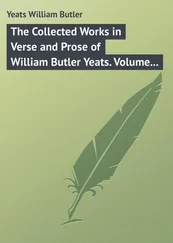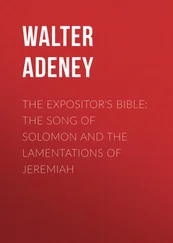Walter Pater - The Renaissance - Studies in Art and Poetry
Здесь есть возможность читать онлайн «Walter Pater - The Renaissance - Studies in Art and Poetry» — ознакомительный отрывок электронной книги совершенно бесплатно, а после прочтения отрывка купить полную версию. В некоторых случаях можно слушать аудио, скачать через торрент в формате fb2 и присутствует краткое содержание. Жанр: foreign_poetry, foreign_home, Поэзия, foreign_antique, foreign_prose, на английском языке. Описание произведения, (предисловие) а так же отзывы посетителей доступны на портале библиотеки ЛибКат.
- Название:The Renaissance: Studies in Art and Poetry
- Автор:
- Жанр:
- Год:неизвестен
- ISBN:нет данных
- Рейтинг книги:5 / 5. Голосов: 1
-
Избранное:Добавить в избранное
- Отзывы:
-
Ваша оценка:
- 100
- 1
- 2
- 3
- 4
- 5
The Renaissance: Studies in Art and Poetry: краткое содержание, описание и аннотация
Предлагаем к чтению аннотацию, описание, краткое содержание или предисловие (зависит от того, что написал сам автор книги «The Renaissance: Studies in Art and Poetry»). Если вы не нашли необходимую информацию о книге — напишите в комментариях, мы постараемся отыскать её.
The Renaissance: Studies in Art and Poetry — читать онлайн ознакомительный отрывок
Ниже представлен текст книги, разбитый по страницам. Система сохранения места последней прочитанной страницы, позволяет с удобством читать онлайн бесплатно книгу «The Renaissance: Studies in Art and Poetry», без необходимости каждый раз заново искать на чём Вы остановились. Поставьте закладку, и сможете в любой момент перейти на страницу, на которой закончили чтение.
Интервал:
Закладка:
This constant tendency to symbolism and imagery gives Pico's work a figured style, by which it has some real resemblance to Plato's, and he differs from other mystical writers of his time by a real desire to know his authorities at first hand. He reads Plato in Greek, Moses in Hebrew, and by this his work really belongs to the higher culture. Above all, we have a constant sense in reading him, that his thoughts, however little their positive value may be, are connected with springs beneath them of deep and passionate emotion; and when he explains the grades or steps by which the soul passes from the love of a physical object to the love of unseen beauty, and unfolds the analogies between this process and other movements upward of human thought, there is a glow and vehemence in his words which remind one of the manner in which his own brief existence flamed itself away.
I said that the Renaissance of the fifteenth century was in many things great, rather by what it designed or aspired to do, than by what it actually achieved. It remained for a later age to conceive the true method of effecting a scientific reconciliation of Christian sentiment with the imagery, the legends, the theories about the world, of pagan poetry and philosophy. For that age the only possible reconciliation was an imaginative one, and resulted from the efforts of artists, trained in Christian schools, to handle pagan subjects; and of this artistic reconciliation work like Pico's was but the feebler counterpart. Whatever philosophers had to say on one side or the other, whether they were successful or not in their attempts to reconcile the old to the new, and to justify the expenditure of so much care and thought on the dreams of a dead faith, the imagery of the Greek religion, the direct charm of its story, were by artists valued and cultivated for their own sake. Hence a new sort of mythology, with a tone and qualities of its own. When the ship-load of sacred earth from the soil of Jerusalem was mingled with the common clay in the Campo Santo at Pisa, a new flower grew up from it, unlike any flower men had seen before, the anemone with its concentric rings of strangely blended colour, still to be found by those who search long enough for it, in the long grass of the Maremma. Just such a strange flower was that mythology of the Italian Renaissance, which grew up from the mixture of two traditions, two sentiments, the sacred and the profane. Classical story was regarded as so much imaginative material to be received and assimilated. It did not come into men's minds to ask curiously of science concerning its origin, its primary form and import, its meaning for those who projected it. It sank into their minds, to issue forth again with all the tangle about it of medieval sentiment and ideas. In the Doni Madonna in the Tribune of the Uffizii, Michelangelo actually brings the pagan religion, and with it the unveiled human form, the sleepy-looking fauns of a Dionysiac revel, into the presence of the Madonna, as simpler painters had introduced there other products of the earth, birds or flowers; and he has given to that Madonna herself much of the uncouth energy of the older and more primitive "Mighty Mother."
It is because this picturesque union of contrasts, belonging properly to the art of the close of the fifteenth century, pervades, in Pico della Mirandola, an actual person, that the figure of Pico is so attractive. He will not let one go; he wins one on, in spite of oneself, to turn again to the pages of his forgotten books, although we know already that the actual solution proposed in them will satisfy us as little as perhaps it satisfied him. It is said that in his eagerness for mysterious learning he once paid a great sum for a collection of cabalistic manuscripts, which turned out to be forgeries; and the story might well stand as a parable of all he ever seemed to gain in the way of actual knowledge. He had sought knowledge, and passed from system to system, and hazarded much; but less for the sake of positive knowledge than because he believed there was a spirit of order and beauty in knowledge, which would come down and unite what men's ignorance had divided, and renew what time had made dim. And so, while his actual work has passed away, yet his own qualities are still active, and he himself remains, as one alive in the grave, caesiis et vigilibus oculis, as his biographer describes him, and with that sanguine, clear skin, decenti rubore interspersa, as with the light of morning upon it; and he has a true place in that group of great Italians who fill the end of the fifteenth century with their names, he is a true HUMANIST. For the essence of humanism is that belief of which he seems never to have doubted, that nothing which has ever interested living men and women can wholly lose its vitality—no language they have spoken, nor oracle beside which they have hushed their voices, no dream which has once been entertained by actual human minds, nothing about which they have ever been passionate, or expended time and zeal.
1871.
SANDRO BOTTICELLI
In Leonardo's treatise on painting only one contemporary is mentioned by Name—Sandro Botticelli. This pre-eminence may be due to chance only, but to some will rather appear a result of deliberate judgment; for people have begun to find out the charm of Botticelli's work, and his name, little known in the last century, is quietly becoming important. In the middle of the fifteenth century he had already anticipated much of that meditative subtlety, which is sometimes supposed peculiar to the great imaginative workmen of its close. Leaving the simple religion which had occupied the followers of Giotto for a century, and the simple naturalism which had grown out of it, a thing of birds and flowers only, he sought inspiration in what to him were works of the modern world, the writings of Dante and Boccaccio, and in new readings of his own of classical stories: or, if he painted religious incidents, painted them with an under-current of original sentiment, which touches you as the real matter of the picture through the veil of its ostensible subject. What is the peculiar sensation, what is the peculiar quality of pleasure, which his work has the property of exciting in us, and which we cannot get elsewhere? For this, especially when he has to speak of a comparatively unknown artist, is always the chief question which a critic has to answer.
In an age when the lives of artists were full of adventure, his life is almost colourless. Criticism indeed has cleared away much of the gossip which Vasari accumulated, has touched the legend of Lippo and Lucrezia, and rehabilitated the character of Andrea del Castagno; but in Botticelli's case there is no legend to dissipate. He did not even go by his true name: Sandro is a nickname, and his true name is Filipepi, Botticelli being only the name of the goldsmith who first taught him art. Only two things happened to him, two things which he shared with other artists:—he was invited to Rome to paint in the Sistine Chapel, and he fell in later life under the influence of Savonarola, passing apparently almost out of men's sight in a sort of religious melancholy, which lasted till his death in 1515, according to the received date. Vasari says that he plunged into the study of Dante, and even wrote a comment on the Divine Comedy. But it seems strange that he should have lived on inactive so long; and one almost wishes that some document might come to light, which, fixing the date of his death earlier, might relieve one, in thinking of him, of his dejected old age.
He is before all things a poetical painter, blending the charm of story and sentiment, the medium of the art of poetry, with the charm of line and colour, the medium of abstract painting. So he becomes the illustrator of Dante. In a few rare examples of the edition of 1481, the blank spaces, left at the beginning of every canto for the hand of the illuminator, have been filled, as far as the nineteenth canto of the Inferno, with impressions of engraved plates, seemingly by way of experiment, for in the copy in the Bodleian Library, one of the three impressions it contains has been printed upside down, and much awry, in the midst of the luxurious printed page. Giotto, and the followers of Giotto, with their almost childish religious aim, had not learned to put that weight of meaning into outward things, light, colour, everyday gesture, which the poetry of the Divine Comedy involves, and before the fifteenth century Dante could hardly have found an illustrator. Botticelli's illustrations are crowded with incident, blending, with a naive carelessness of pictorial propriety, three phases of the same scene into one plate. The grotesques, so often a stumbling-block to painters who forget that the words of a poet, which only feebly present an image to the mind, must be lowered in key when translated into form, make one regret that he has not rather chosen for illustration the more subdued imagery of the Purgatorio. Yet in the scene of those who "go down quick into hell," there is an invention about the fire taking hold on the upturned soles of the feet, which proves that the design is no mere translation of Dante's words, but a true painter's vision; while the scene of the Centaurs wins one at once, for, forgetful of the actual circumstances of their appearance, Botticelli has gone off with delight on the thought of the Centaurs themselves, bright, small creatures of the woodland, with arch baby face and mignon forms, drawing tiny bows.
Читать дальшеИнтервал:
Закладка:
Похожие книги на «The Renaissance: Studies in Art and Poetry»
Представляем Вашему вниманию похожие книги на «The Renaissance: Studies in Art and Poetry» списком для выбора. Мы отобрали схожую по названию и смыслу литературу в надежде предоставить читателям больше вариантов отыскать новые, интересные, ещё непрочитанные произведения.
Обсуждение, отзывы о книге «The Renaissance: Studies in Art and Poetry» и просто собственные мнения читателей. Оставьте ваши комментарии, напишите, что Вы думаете о произведении, его смысле или главных героях. Укажите что конкретно понравилось, а что нет, и почему Вы так считаете.
